Inter-row tool
Les matériels d'entretien du sol sont aussi divers que l'ensemble des itinéraires techniques que l'on souhaite mettre en place dans l'inter-rang. Ainsi, on retrouve du matériel pour le travail de la terre, pour la gestion des enherbements avec les gyrobroyeurs, rouleaux et autres.
Le travail du sol représente une technique très répandue. Cependant, depuis de nombreuses années, d'autres stratégies qui reposent sur une gestion du couvert végétal voient le jour.
En général, le choix de la technique utilisée dépend de beaucoup de facteurs (topographie, état des sols, vigueur de la vigne) mais aussi de la sensibilité du viticulteur au travail à effectuer au niveau du sol ou à garder ses sols enherbés.
Le travail du sol représente une technique très répandue. Cependant, depuis de nombreuses années, d'autres stratégies qui reposent sur une gestion du couvert végétal voient le jour.
En général, le choix de la technique utilisée dépend de beaucoup de facteurs (topographie, état des sols, vigueur de la vigne) mais aussi de la sensibilité du viticulteur au travail à effectuer au niveau du sol ou à garder ses sols enherbés.
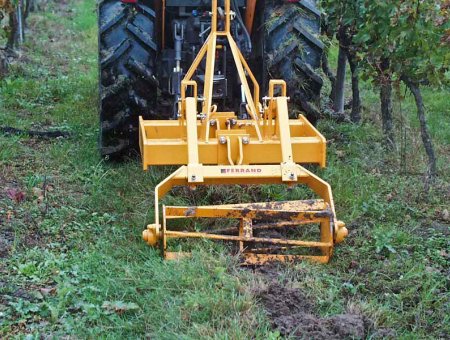
Objectives of tillage before planting
Objectives before planting
The objectives are very different depending on whether they are set before planting or after planting.Before planting, we want to put the vine plant in optimum conditions for its development. The aim is to loosen the soil without creating beds that hinder root development, to bury fertilisers and soil improvers and, in some cases, to remove roots that could transmit root rot and limit the proliferation of nematodes.
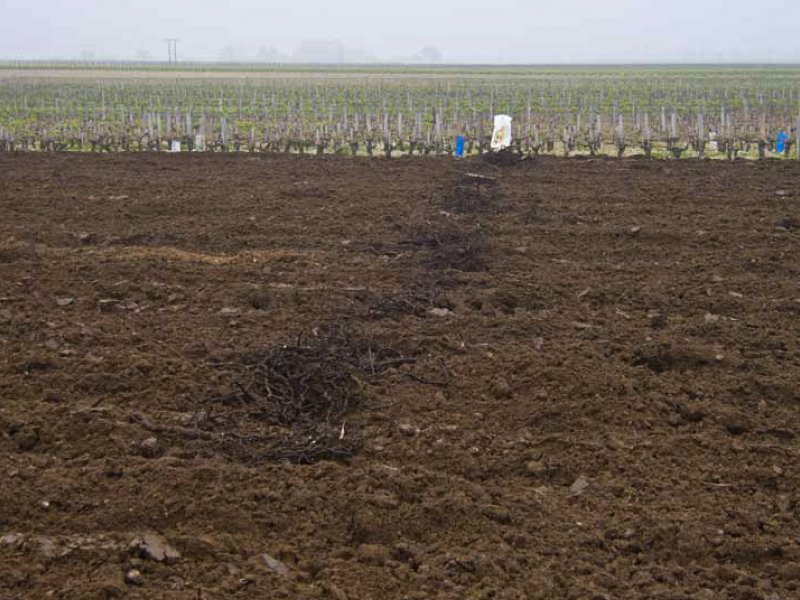
Two main types of equipment are used
- equipment that performs traditional cutting and turning work, i.e. the plough
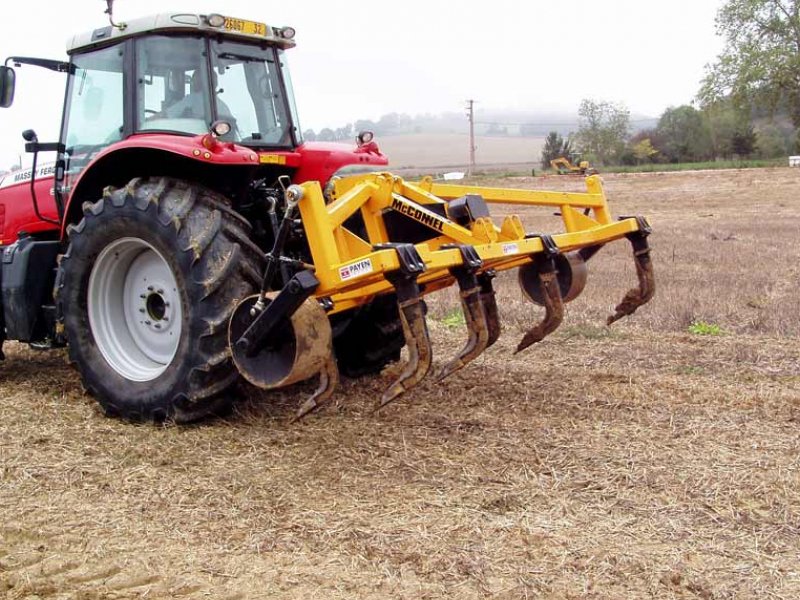
- equipment that creates break lines in the soil, known as decompactors

Plough or decompactor, what's the best choice?
The plough used before planting is a single-body ripper plough, which can work to a depth of 60 centimetres. By cutting up and turning over the soil, it can bring undesirable layers of soil to the surface and disrupt the soil's microbial life. Organic matter and fertilisers are often buried too deep, out of reach of the young vine when it needs them most. On the other hand, this extensive turning over brings roots to the surface , where they are eliminated to limit the risk of rot developing. Another negative aspect is that in clay-rich soils, the passage of the ploughshare smoothes the soil, compacting it and forming a sole. The decompactor consists of a frame to which straight tines (subsoiler type) or curved tines (riper type) are attached, and creates broken lines in the soil without forming a sole. This type of equipment, which does not turn the soil over, does not allow the roots to be brought to the surface. With the decompactor, the root system can be established more quickly, especially as decompaction is followed by medium tillage, which puts amendments and fertilisers at the root level of the young plant.Objectives of tillage after planting
Objectives after planting
After planting, the main objective of traditional tillage was to control weeds, which become entangled in the stock and compete with the vines. This mechanical weeding technique (as opposed to chemical weeding) was for a long time the only one used. The work carried out after planting also has other objectives: to form furrows to improve water drainage in winter, to protect the grafting bead in the event of intensive cold, and to bury the soil improvers and maintenance fertilisers. When vines are not cultivated, a new form of soil cultivation is introduced: decompacting between rows, with the aim of recreating porosity in soil compacted by the repeated use of heavy machinery.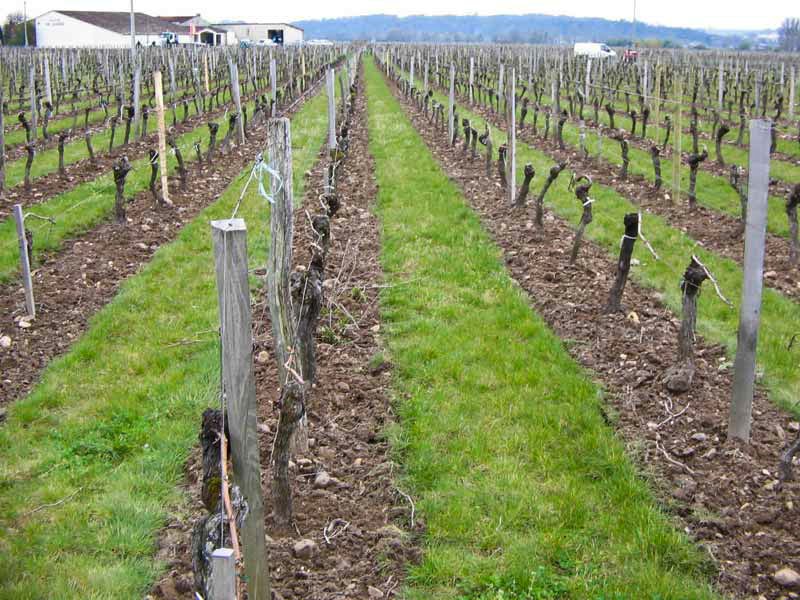
There are many technical solutions for controlling the development of weeds, but to choose the right equipment, a number of factors need to be taken into account:
- the vineyard management method
- work objectives
- the nature of the soil
- weather conditions
- the characteristics of the tools.
- the nature of the weeds
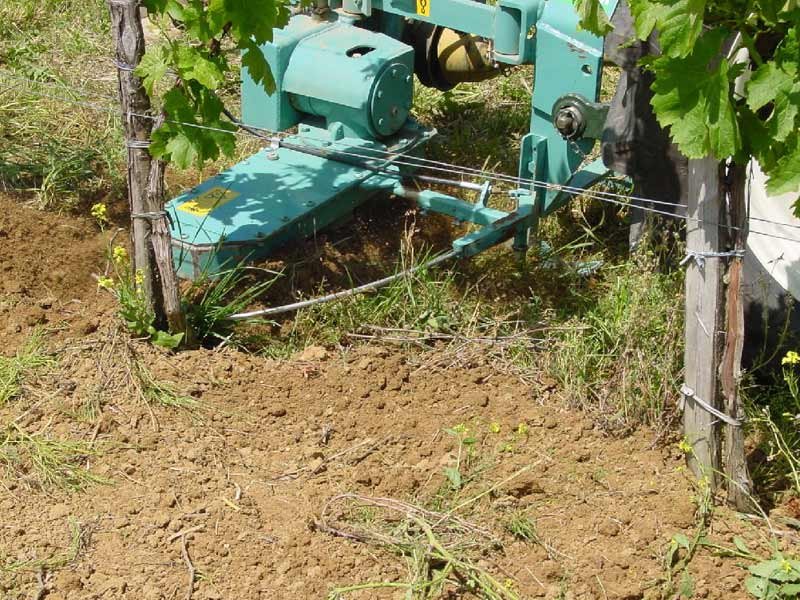
Different types of tool used after planting
Tools are classified into different categories according to their mode of action:- ploughs
- tine tools
- disc tools
- rollers
- animated inter-row tools
The objectives of grass cover
Establishing and maintaining plant cover
Plant cover is sometimes necessary for a number of reasons:- agronomic, by allowing natural decompaction and improving soil stability, stimulating biological activity, or creating a green manure crop
- practical, by ensuring good bearing capacity during mechanical operations, limiting erosion phenomena, etc
Different types of tool are used to establish and maintain plant cover
- seed drills
- inter-row and inter-seed mowing equipment
- chopping rollers
- thermal weeding
Summary table of soil-working tools
Experiment
See the list of experimentsSee more - Outils interlignes - 2011
- Etude des performances énergetiques des matériels viticoles inter-rangs - 2010
- Entretien mécanique du rang - 2007
- L'entretien du sol interceps et inter-rangs, deux objectifs complémentaires - 2006
- Décompactage et sous-solage des sols viticoles - 2006
- Alternatives au désherbage chimique sur le rang - 2006
- [TEST MATERIEL] Banc d'essai comparatif, compactage et décompactage - 2005
- Décompactage tableau comparatif de materiels - 2004
- Décompactage - 2004












